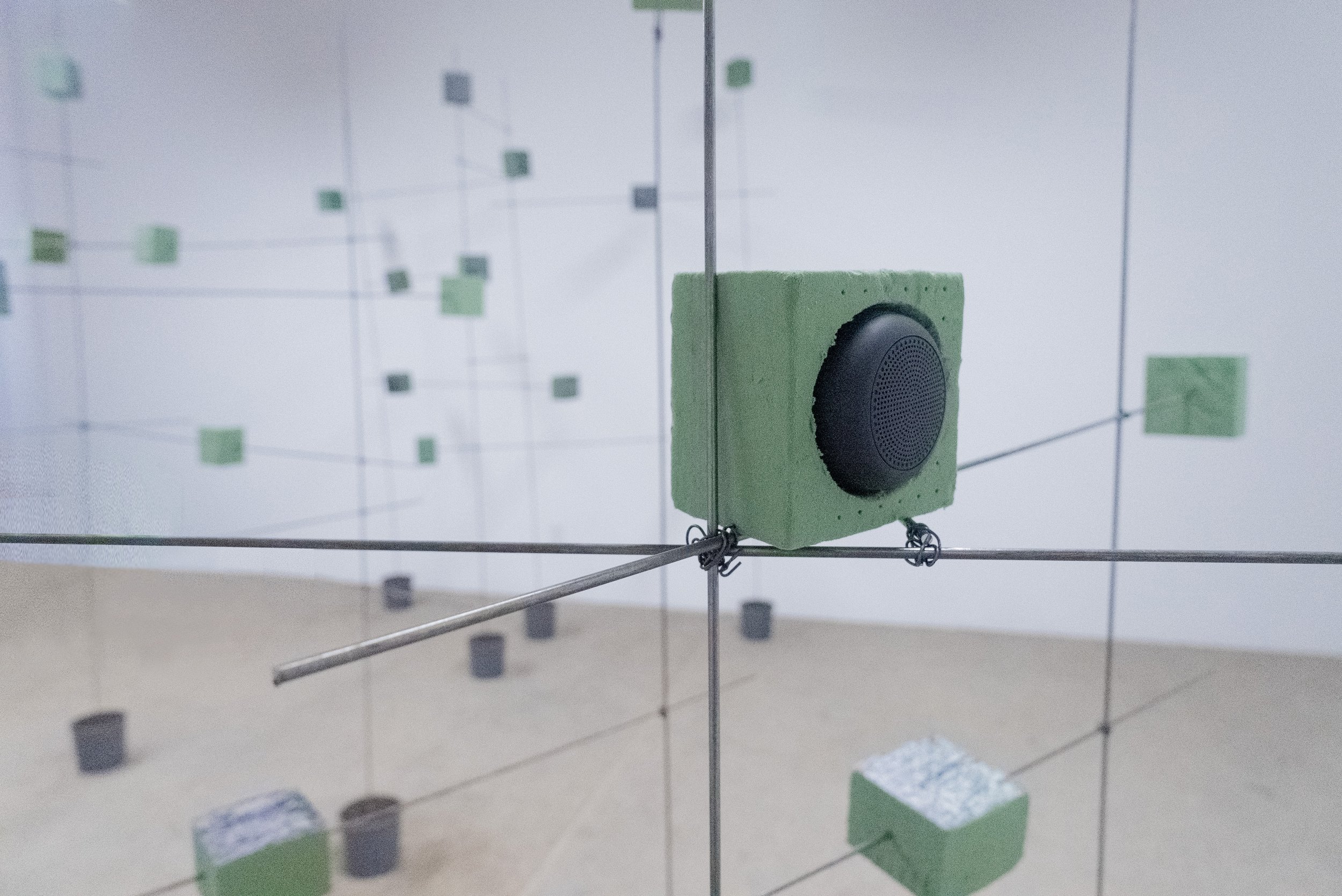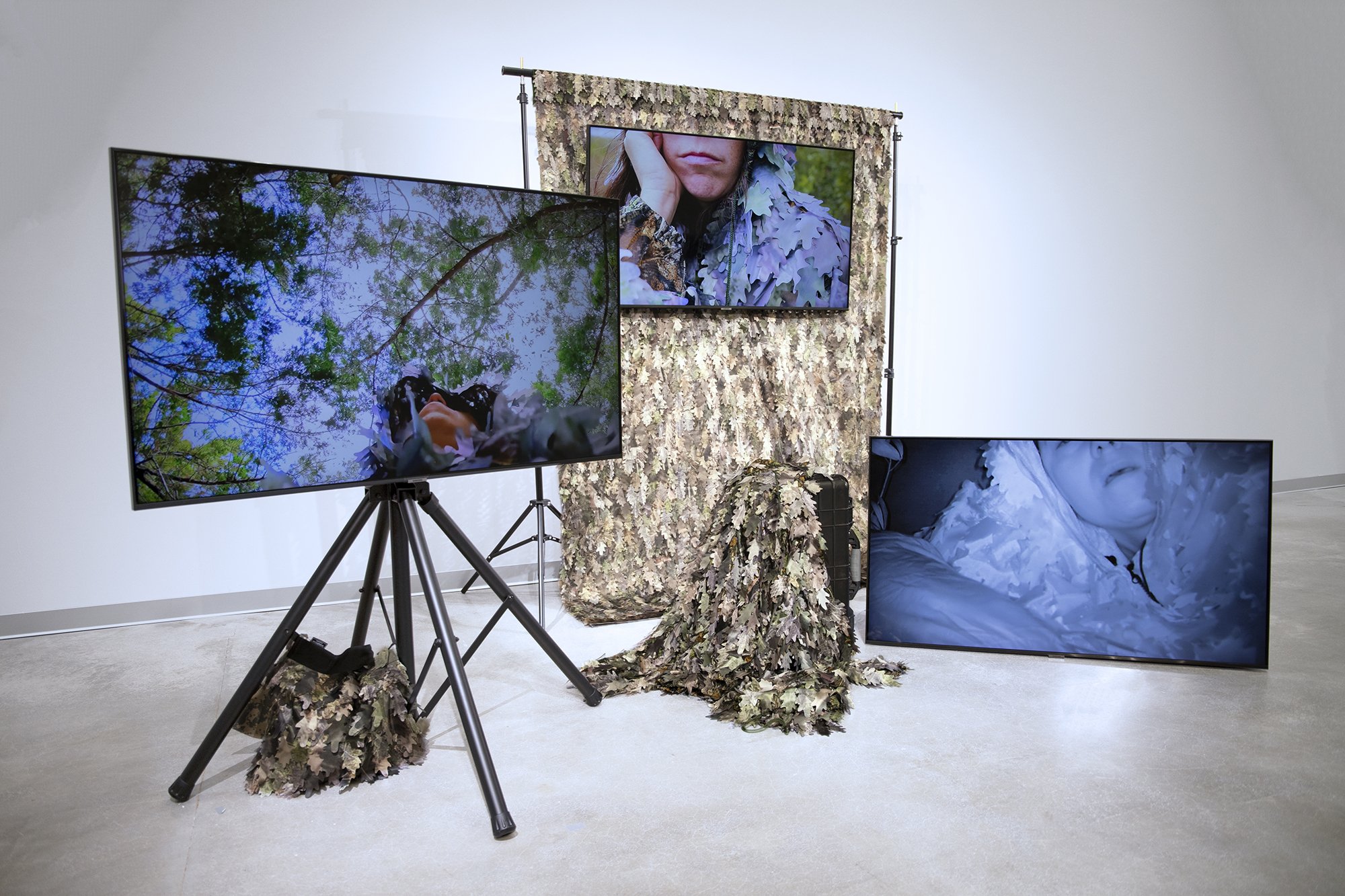
As Light as Sand, as Heavy as Water
People often say balance is key to life, that diplomacy, negotiation, and finding the middle ground are veritable practices to live by. They engender a feeling of composure, stasis, and mediation of difference. But achieving balance is not a simple act; it often implies letting go of something. Still, this notion is so commonplace in culture and readily agreed with that we rarely concern ourselves with the associated loss. Is seeking balance a worthy pursuit?
Andre Keichian’s installation A Grain of Matter in Relation (2024), as displayed at the Human Resources Gallery, confronts us with this ubiquitous question.

Rebecca Romani on Alice Könitz’s “Fungus Garden.”
Termite season has traditionally been a cause for concern in California, with its wooden framed homes. The termites swarm in late summer and early Fall throughout the state, and soon, what once was solid woodwork is paper-thin. Artist Alice Könitz casts the destructive critters in a new light in her visually complex installation at the Lazy Eye Gallery in Yucca Valley in southern California. Könitz's latest work, "Fungus Garden," draws in visitors, involving them in her meditation [1] on architectural structure as home and symbiosis in the form of the mushrooms cultivated by the termites Könitz invokes. Fungus Garden is also a trauma response to the ferocious 2020 California wildfires that inspired it.

Forgetting Until Tomorrow
According to the Oxford Learner’s Dictionary, the noun index is defined as “a list of names or topics that are referred to in a book, etc., usually arranged at the end of a book in alphabetical order or listed in a separate file or book.” Based on this description, anything that can be named can be organized in a linear sequence and, consequently, can be categorized and potentially consigned to obscurity through archiving. An insinuation that there is a range of visibility, and equally so, invisibility, that comprises this system of classification leads to a more investigative inquiry about how and what kind of value is being placed on the content being indexed.

Jennie E. Park on Jisoo Chung’s “Flower Blooms Only After Surviving A Harsh Winter.”
The central gesture of Jisoo Chung’s sound and sculpture installation, Flower Blooms Only After Surviving A Harsh Winter, is ambivalent and simultaneous fragmentation and assembly. Perpendicular steel bars, joined together with garden ties or anchored in potted soil on the floor, at once separate and connect small floral foam blocks. The foam blocks, designed to temporarily hold water and real cut flower stems, instead permanently display vellum-printed or carved relief flower images, or are hollowed out to hold mini speakers. The speakers emanate human voices repeating the syllables “su su” in cryptic relation to the visible structure. Overall, immediate decipherability is obscured or lost, and it’s unclear whether this loss entails a problem, solution or other possibility.

The New Commons — by Prima Jalichandra- Sakuntabhai
The online program The New Commons interrogates the interrelationship between digital communications technologies and the experience of diaspora, the state of being away from home, relying on memory, imagination, and dreams to keep the image of that place alive. Digital space adds another layer to this work on memory, allowing for the simultaneous presence of past and present images of distant places. We no longer solely rely on individual memories but on collective memory, a memory commons.

Fragment and Totality: Mapping Fragments by Bundith Phunsombatlert
From his early education and works as a printmaker to his embrace of digital technologies going into the field of installation art, Thailand-born Bundith Phunsombatlert’s artistic practice can be defined, according to the artist´s own self-understanding, as a kind of transmedia practice, linking traditional and new media. An artistic praxis in which image making and image thinking, aesthetic concepts, and artistic forms, relating in many different ways the graphic arts, photography, digital photography, and video, come together within the medium of installation art with its proper spatial and temporal dimensions, narrative strategies, theatrical elements, and immersive structural models.

Breath of Fire — About Amauta and David art videos, volcanos, virtual environments, and urban extractivism
To gain an understanding of a volcano, we must change scales, either by going up or down temporally and spatially. Volcanic rocks contain traces of long-term geological processes, slow metabolisms of living matter, and fast-growing and decaying vegetation. Volcanic rocks bring together the fast and slow, the big and small, in a surprisingly complex microcosm that defies a simple conception of what is alive or what constitutes a material object. The volcano edifice is constructed over time by the accumulation of rocks, ash, and solidified lava. Monogenetic volcanoes, such as Xitle, which have erupted only once since their formation, are sometimes mistaken for medium or even small mountains.
Amauta García and David Camargo work with already available tools and bend media to reach different scales of observation of natural phenomena and their reflection on human means of (…)

Bad Outdoorsmen, John Muir, Alone, and the Outdoor Industrial Complex
Meredith Laura Lynn and Katie Hargrave met as graduate students in 2010. In 2017, they attended a residency in Oregon that connected artists with the environment. On the way there and heading back east afterward, they stopped in national parks and conceived what became their ongoing, long-distance collaboration. Lynn now lives in Florida and Hargrave in Tennessee. They often develop ideas and conduct research in the field then take on developmental parts of projects separately and join forces at crucial junctures on visits to each other’s studios, camping, or in culminating moments for exhibitions.
